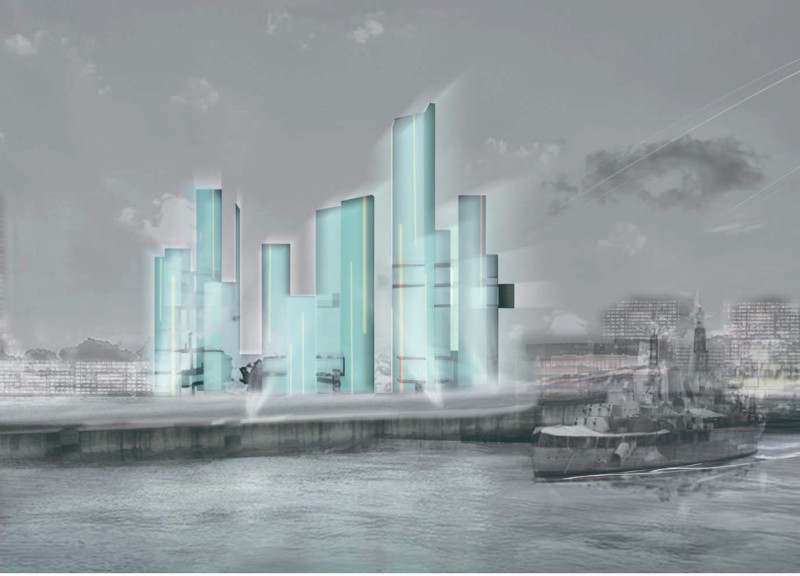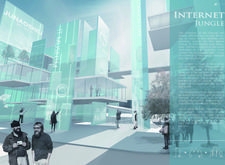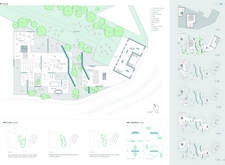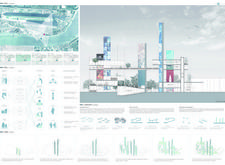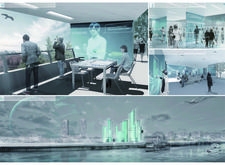5 key facts about this project
### Project Overview
The "Internet Jungle" is an architectural design project located in London, conceived as a museum dedicated to exploring the influence of the internet on modern society. The facility aims to provide a physical manifestation of the evolving digital landscape, emphasizing themes of connectivity and information flow. The design integrates elements that reflect the intersection of physical and virtual realities, creating an engaging environment for visitors.
### Spatial Configuration and Connectivity
The architectural strategy incorporates slender vertical structures that echo forms found in nature, facilitating both spatial organization and user interaction. These tree-like elements not only offer a visually dynamic presence but also support large screens designed for real-time data interaction. This design encourages a continuous engagement with digital content, fostering a vibrant atmosphere that reflects the themes of connectivity and interactivity central to the internet.
### Materiality and Natural Integration
Material choices are foundational to the project, with an emphasis on transparency and structural integrity. Extensive use of glass enhances openness and allows for natural light to permeate interior spaces, while also accommodating digital displays. Steel provides the necessary framework to create expansive areas, with concrete ensuring structural stability. Wood elements are integrated in seating and communal areas, introducing warmth and a tactile contrast to the predominantly cool materials of glass and steel. The inclusion of greenery throughout the design not only contributes to environmental sustainability but also promotes a symbiotic relationship between the natural and built environments, inviting both visitors and passersby to engage with the urban landscape.


